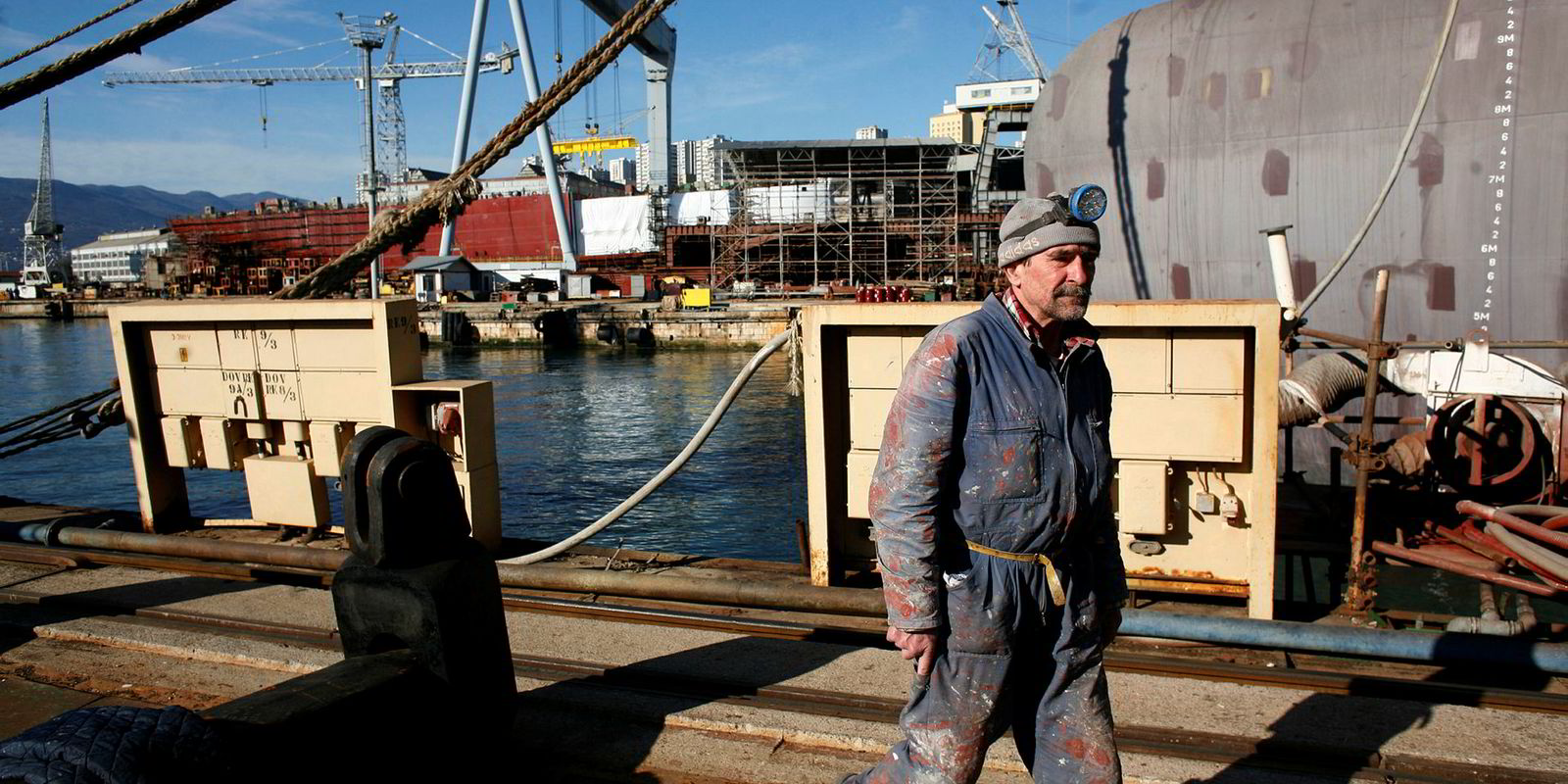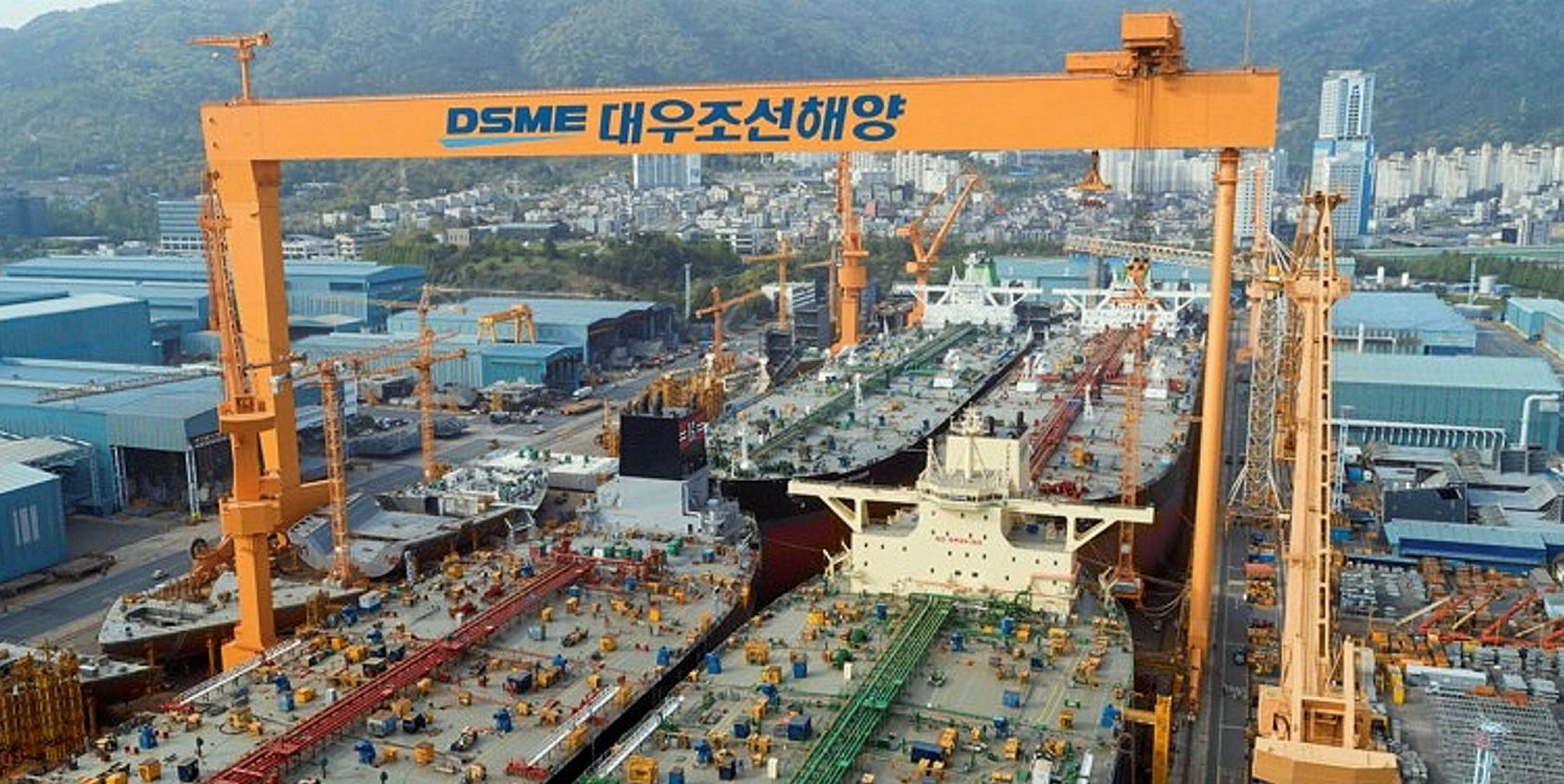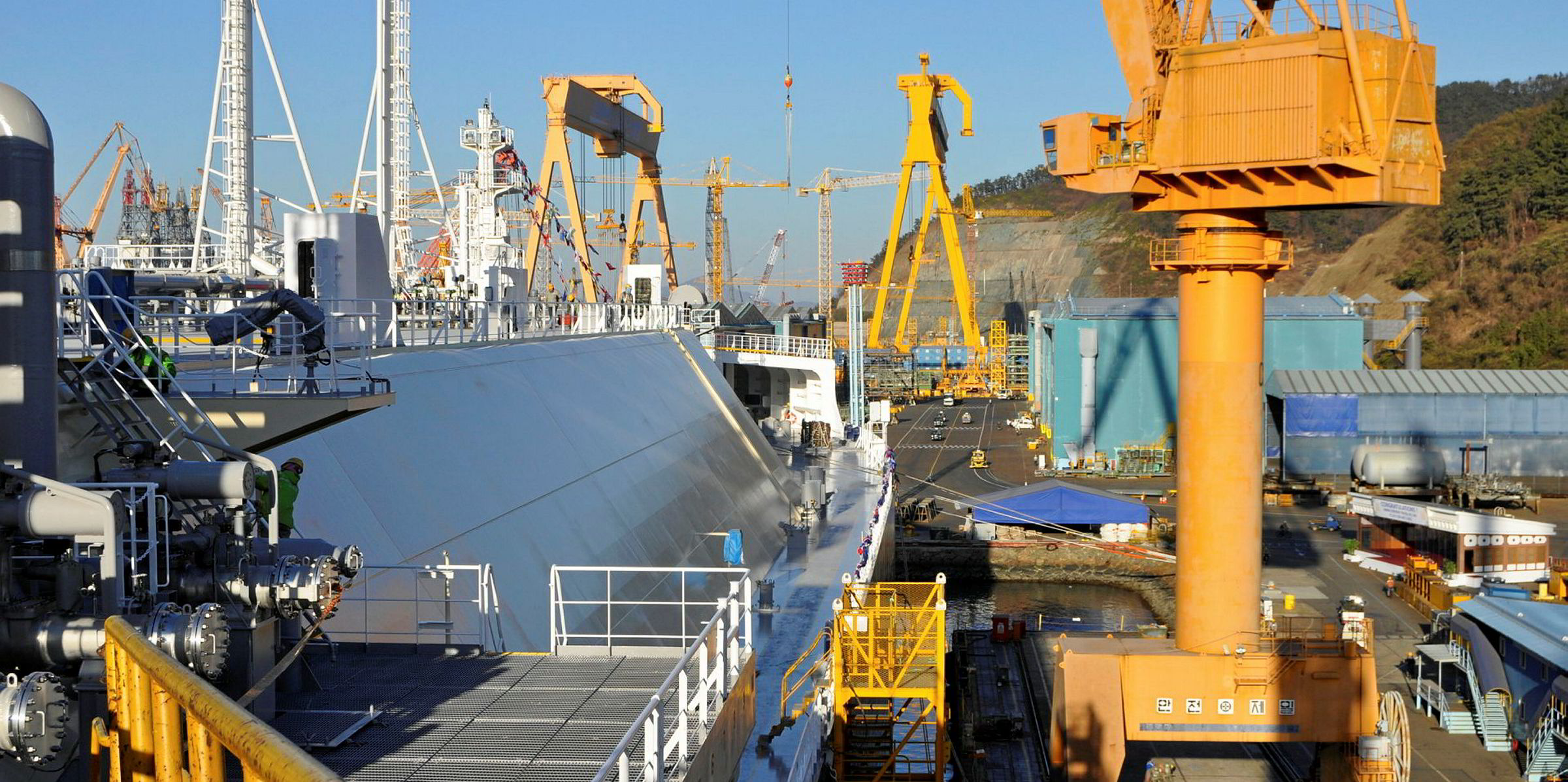A decline in new orders to the lowest level in 15 years underlines why shipyard closures, mergers and consolidation are continuing.
And it explains why the number of active vessel builders in the world has declined by 60% to fewer than 130.
The owners of 3 Maj, Croatia’s biggest shipyard, are the latest to demand a $1bn bailout or face being wiped out.
All this comes even as the price of newbuildings has been steadily, if gently, rising since the modern-day trough reached in 2017.
Shipbroker Clarksons says there were 3,202 vessels of a combined 81 million gt on order at the beginning of this month.
Orders plummet
This is the lowest level since 2004, before the height of the shipping boom that sent the Baltic Freight Index (BFI) from below 2,000 points to almost 12,000 points in double-quick time.
Now, of course, the BFI is languishing well below 1,000 points and has not recovered to any meaningful way since the global financial crisis of 2008.
The figures from Clarksons confirm the way bulker owners in particular continue to retrench in the face of bad markets.
The figures from Clarksons confirm the way bulker owners in particular continue to retrench in the face of bad markets
Bulkers and tankers make up barely 40% of the total ships on order, according to Clarksons.
This compares with almost 70% a decade ago and yet we are now beginning to see Greek shipowners looking for cheap tankers in China.
My colleague Irene Ang has just reported that companies such as Chartworld Shipping and Tsakos Group are considering orders for up to 12 tankers. They like the lower prices being offered by China and think the market is set for a longer-term recovery.
Brent crude rise
In recent days, the benchmark Brent blend crude has hit $75 per barrel — up from almost $50 in December — on the back of supply fears.
And the shipbuilding sector continues to be hit by bright sparks from the container, gas and cruise markets.
Are new boxships even justified? The world’s biggest independent liner operator, Maersk Line, does not think so.
The global fleet is now at 22 million teu, almost double the size it was 10 years ago, and has been struggling with overcapacity.
World trade volumes have not been growing as quickly as expected, due partly to the slowdown in economic activity in China caused by the trade war with the US
World trade volumes have not been growing as quickly as expected, due partly to the slowdown in economic activity in China caused by the trade war with the US.
Yet there has been a continuing boom in new orders, particularly for mega-ships being contracted by Asian owners at local yards.
Market distortion
China and South Korea were presumably in Maersk Line’s cross hairs when it accused some Asian nations of “distorting” the container market by ordering ships unnecessarily.
“If states are supporting operators in ways that would lead to the introduction of tonnage that would otherwise not be introduced, this distorts the ability of markets to regulate themselves,” the Danish operator has said.
Shipping consultancy Drewry believes that the use of slow-steaming by boxship operators would save cash (and carbon) while helping absorb any excess tonnage.
Clarksons has noted that all 34 newbuilding orders for vessels larger than 10,000 teu since the middle of 2018 were for state-linked owners.
Just look at Hyundai Merchant Marine, now owned by Korea Development Bank and contractor of 20 containerships including 12 vessels of 23,000 teu each, or at China’s CSSC Shipping Leasing ordering 10 boxships of 15,000 teu a piece.
Some of these new orders are seen as an attempt by national governments to keep local yards open in difficult times.
Mega-merger
South Korea is in the middle of a massive defensive mega-merger between Hyundai Heavy Industries and DSME.
Some countries may also be deliberately building up their national fleet so they can be more self-sufficient.
The shipbuilding sector has shown itself to be resilient, flexible and creative in its ability to cope with one of the most vicious market downturns
This is part of the increasing global shift to a more protectionist, anti-free trade world. Meanwhile, LNG shipowners have also been busy ordering new tonnage — as have the cruise companies.
The shipbuilding sector has shown itself to be resilient, flexible and creative in its ability to cope with one of the most vicious market downturns.
And still there is innovation around. Shell has just exported its first cargo from its Prelude floating production system, the largest maritime hull ever built.
And now plans are taking shape in China that would see the biggest ever containership constructed, with capacity of 25,000 teu. That is ambition.






